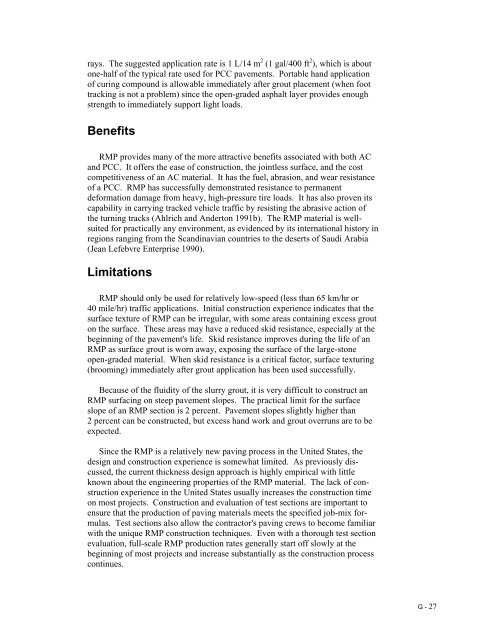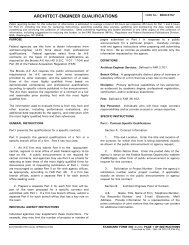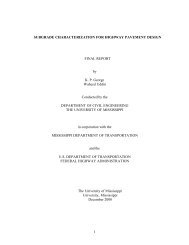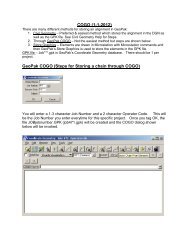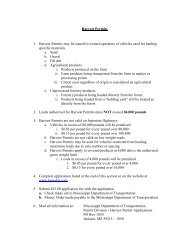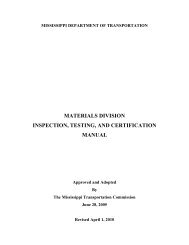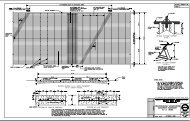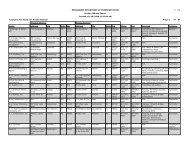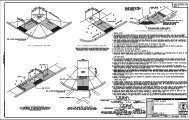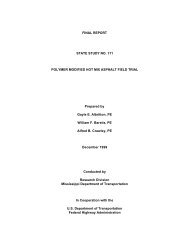Resin Modified Pavement Demonstration Project.pdf
Resin Modified Pavement Demonstration Project.pdf
Resin Modified Pavement Demonstration Project.pdf
You also want an ePaper? Increase the reach of your titles
YUMPU automatically turns print PDFs into web optimized ePapers that Google loves.
ays. The suggested application rate is 1 L/14 m 2 (1 gal/400 ft 2 ), which is aboutone-half of the typical rate used for PCC pavements. Portable hand applicationof curing compound is allowable immediately after grout placement (when foottracking is not a problem) since the open-graded asphalt layer provides enoughstrength to immediately support light loads.BenefitsRMP provides many of the more attractive benefits associated with both ACand PCC. It offers the ease of construction, the jointless surface, and the costcompetitiveness of an AC material. It has the fuel, abrasion, and wear resistanceof a PCC. RMP has successfully demonstrated resistance to permanentdeformation damage from heavy, high-pressure tire loads. It has also proven itscapability in carrying tracked vehicle traffic by resisting the abrasive action ofthe turning tracks (Ahlrich and Anderton 1991b). The RMP material is wellsuitedfor practically any environment, as evidenced by its international history inregions ranging from the Scandinavian countries to the deserts of Saudi Arabia(Jean Lefebvre Enterprise 1990).LimitationsRMP should only be used for relatively low-speed (less than 65 km/hr or40 mile/hr) traffic applications. Initial construction experience indicates that thesurface texture of RMP can be irregular, with some areas containing excess grouton the surface. These areas may have a reduced skid resistance, especially at thebeginning of the pavement's life. Skid resistance improves during the life of anRMP as surface grout is worn away, exposing the surface of the large-stoneopen-graded material. When skid resistance is a critical factor, surface texturing(brooming) immediately after grout application has been used successfully.Because of the fluidity of the slurry grout, it is very difficult to construct anRMP surfacing on steep pavement slopes. The practical limit for the surfaceslope of an RMP section is 2 percent. <strong>Pavement</strong> slopes slightly higher than2 percent can be constructed, but excess hand work and grout overruns are to beexpected.Since the RMP is a relatively new paving process in the United States, thedesign and construction experience is somewhat limited. As previously discussed,the current thickness design approach is highly empirical with littleknown about the engineering properties of the RMP material. The lack of constructionexperience in the United States usually increases the construction timeon most projects. Construction and evaluation of test sections are important toensure that the production of paving materials meets the specified job-mix formulas.Test sections also allow the contractor's paving crews to become familiarwith the unique RMP construction techniques. Even with a thorough test sectionevaluation, full-scale RMP production rates generally start off slowly at thebeginning of most projects and increase substantially as the construction processcontinues.G - 27


